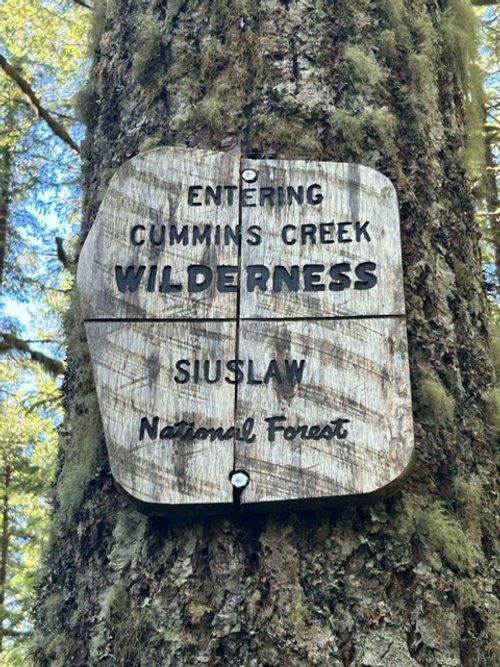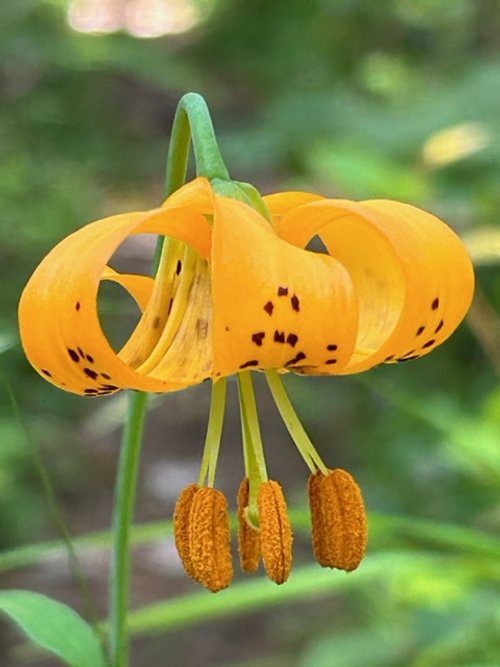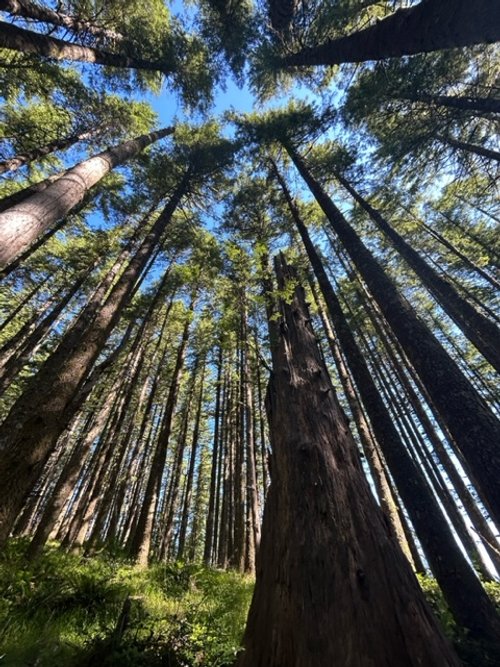Who’s Cummin?
Cummins Creek Wilderness Trail #1366
Story by Michael Edwards
for the TODAY
“A wilderness, in contrast with those areas where man and his works dominate the landscape, is hereby recognized as an area where the earth and its community of life are untrammeled by man, where man himself is a visitor who does not remain.”
Excerpt from Public Law 88-577, The Wilderness Act of 1964



Forest explorers sense wildlife in fragments. A bird in flight casts a partial shadow onto a patch of sword ferns.
“Was that a spotted owl? A raven?”
Trudging deep into the woods, the sojourner hears shuffling in the brush behind a ridge.
“Is that a black bear, a cougar; Sasquatch? That animal must have opposable thumbs. How else could it snap a branch so crisply?”
The Oregon Coast guards its mysteries in fog and foliage. Despite the capillary-like road networks crisscrossing much of the Coast Range’s tree plantations and clear-cuts, pockets of wildness persevere.
When civilization’s side effects drive me to walk hastily through remote wild-lands, my mother’s New England accent breaks through the spirit world frequency and asks,“Where’s the fi-yah Michael?” I whisper, “There is no fire” and come to a standstill, breath deeply and attempt to open up my atrophied senses. Fifteen minutes of stillness in the wilderness reveals ferns swaying in the breeze, two hairy woodpeckers probing bark grooves for insects and a dragonfly feasting on gnats. Perched on an alder branch, a chickadee gleans seeds from a cone and watches me wonder why I failed to bring more than a small bottle of water and a dollar store cheese stick on such a long hike.
“Why didn’t you bring more wahtah and a nice sandwich Michael? Some sunscreen for heaven’s sake?”
Wilderness meditation takes practice.
The Cummins Creek Ridge Trail #1366 begins in the dank spruce forest a few miles southeast of Cape Perpetua and heads up and out of the fog-belt into sunlit groves of old growth Douglas fir. Cummins Creek Wilderness is one of four federally designated wilderness areas along the Oregon Coast. Cummins Creek and Drift Creek Wilderness are the only two coastal wilderness areas accessed by footpaths. Both the nearby Rock Creek Wilderness and the newly minted Devil’s Staircase Wilderness, northeast of Reedsport, are devoid of trails.
The first couple of miles of the Cummins Ridge Trail cut through a defunct logging road rapidly being reclaimed by elderberry and devil’s club. Where the road ends, the second-growth forest breaks out into a decluttered woodland of waist-high ferns, droopy-crowned hemlocks, whimsically branched cedars and columns of centuries old firs. Atop the ridge-line, in the shade of gale decapitated snags, brilliant orange tiger lilies bask in summer’s ephemeral light. Cummins Creek Wilderness doesn’t immediately kick you in the gut with its grandeur, but the further and slower you travel into its heart, the more the land relinquishes its subtle beauty.
The Forest Service rates the Cummins Creek Ridge Trail as “More Difficult.” It’s definitely more difficult than most Oregon Coast hikes that I’ve been on. The trail lacks places to get potable water, a bench or signage. It’s a twelve mile roundtrip hike where half of the trek is a steady climb. For the athletic woman running up the the trail with her gregarious golden retriever, the trail is a warm-up for the day, but for this 48-year-old flat-footed author wishing for a lighting strike to end the agony after mile nine, the trail is a cramp inducing odyssey. Visitors could easily cut this hike from twelve miles to eight and still see the wildflowers, the oldest trees and the forest veiled views of the surrounding countryside.
Along with providing unparalleled solitude for Homo sapiens, Cummins Creek’s remoteness, steep terrain and intact wilderness characteristics make it prime nesting habitat of one of the rarest seabirds in the Pacific Northwest: the marbled murrelet, colloquially known as the “baked potato with wings.” In the steep canyon cut by Bob Creek, to the south of the ridge trail, the mossy branch of an ancient Sitka spruce hosts the camouflaged egg of the murrelet. If the chick avoids a fall and the beak of a raven, the seldom seen avian will make its maiden flight from its forest nursery to its home atop the cold, herring rich waters off of Cape Perpetua.
Just north of the wilderness area turnoff on Highway 101 is the Cape Perpetua Visitor Center. The visitor center is where to ask a ranger about the wilderness and the many shorter hikes and wheelchair accessible adventures. Along with some fascinating history, the shorter jaunts will provide you with the same excellent scenery as the wilderness, minus the solitude, voices from the great beyond and full body soreness.
For more information on the Cummins Creek Wilderness, go to fa.usda.gov.
